According to the U.S. Food and Drug Administration’s latest register of “Current and Resolved Drug Shortages and Discontinuations Reported to FDA,” some 123 prescription drugs – from Albuterol Sulfate Solution to Vinblastine Sulfate Injection – are currently “in shortage,” and another 141 have been discontinued.
Among the reasons that supplies of some drugs have diminished, according to the agency, are manufacturing and quality problems and delays. Spikes in demand, due to increased prevalence of certain diseases or conditions or to improved diagnostic methods of discovering them, also mean shortages. And then there are those well-known supply chain issues.
We’ve all heard about them and how they can affect everything from washing machines to tampons to sriracha hot sauce. Manufacturers and distributors around the world were affected by pandemic-era closures and slowdowns, and in some cases are still not back up to speed; Houthi terrorist attacks on shipping in the Red Sea, wholesale piracy off the coasts of Indonesia and Somalia, even truck hijacking and train robberies within the U.S. have all slowed down the flow of goods into retail channels in America.
Drugs are particularly vulnerable, because according to the most recent data from the US Pharmacopoeia, a definitive pharmaceutical resource, only 10% of the APIs (active pharmaceutical ingredients) used to formulate drugs in the U.S. are manufactured in this country. In comparison, 48% come from India, 22% from Europe, 13% from China, and 7% from unspecified sources. (These are the 10 biggest problems people have with their prescription meds.)
To determine the states whose residents were most affected by both prescription and over-the-counter drug shortages, 24/7 Tempo reviewed a report by the LendingTree insurance subsidiary ValuePenguin, a consumer spending data site.
It may not be surprising to learn that West Virginia – which has one of the highest poverty and obesity rates in the nation, as well as the highest rate of adult depression and the worst work environment – would have issues obtaining needed medications for various reasons. It is perhaps more unexpected to find that Hawaii, one of our two most isolated states, reports the lowest percentage of shortages and the fourth-lowest percentage of health consequences resulting from those shortages.
Methodology
To compile a list of medicine shortages by state, 24/7 Tempo reviewed a new report from LendingTree insurance subsidiary ValuePenguin. Analyzing data from the U.S. Census Bureau Household Pulse Survey conducted from Sept. 20 to Oct. 2, 2023, researchers estimated the percentage of American adults who experienced either prescription or OTC medication or home medical equipment shortages in the previous month, along with the perceived consequences of those shortages, nationwide and by state. States are ranked according to the percentage of those surveyed who experienced at least one kind of shortage during the 12-day period covered.
Here is a ranking of medical shortages by state:
50. Hawaii
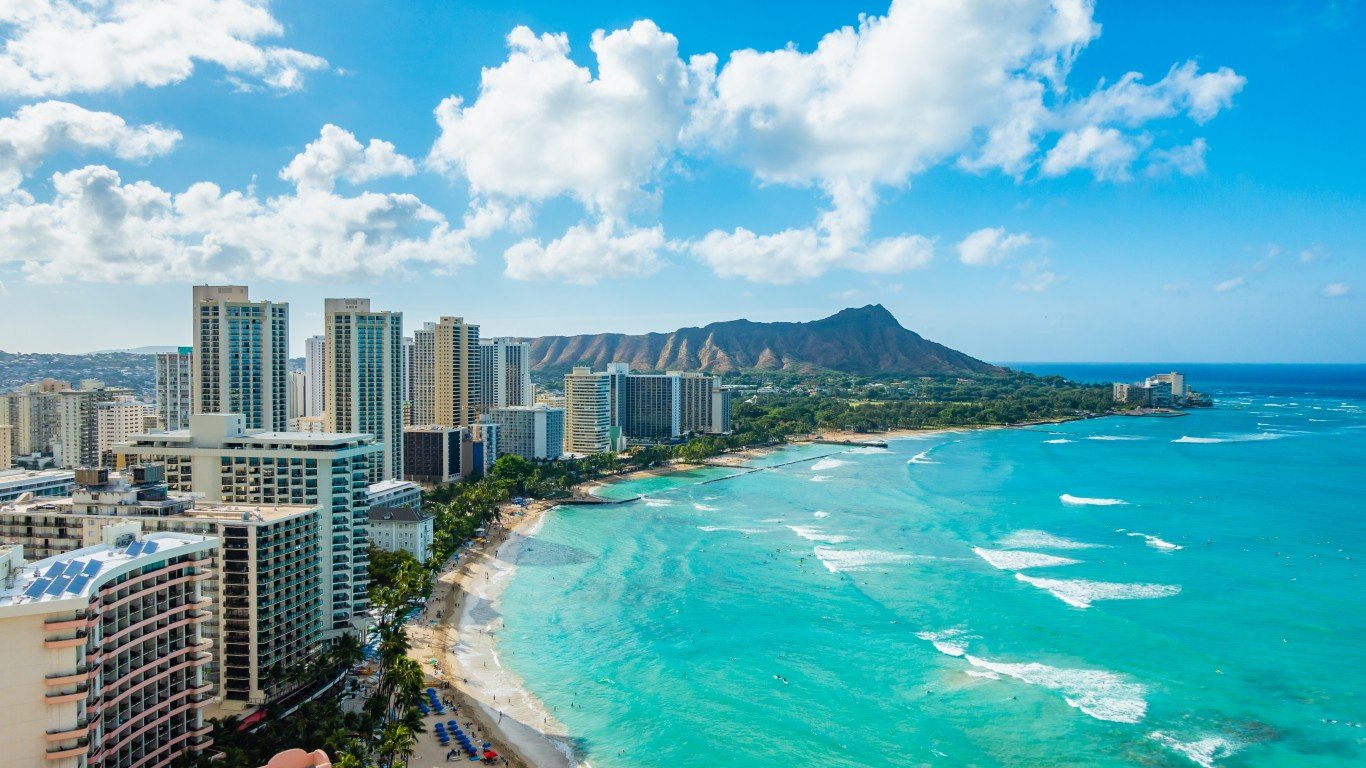
- People experiencing at least one kind of shortage: 11.3%
- People who couldn’t get a prescribed medicine: 6.6% — the lowest
- People who can’t find OTC medicine: 3.5% — the lowest
- People reporting health consequences due to shortages: 2.7% — 4th lowest
49. Wisconsin
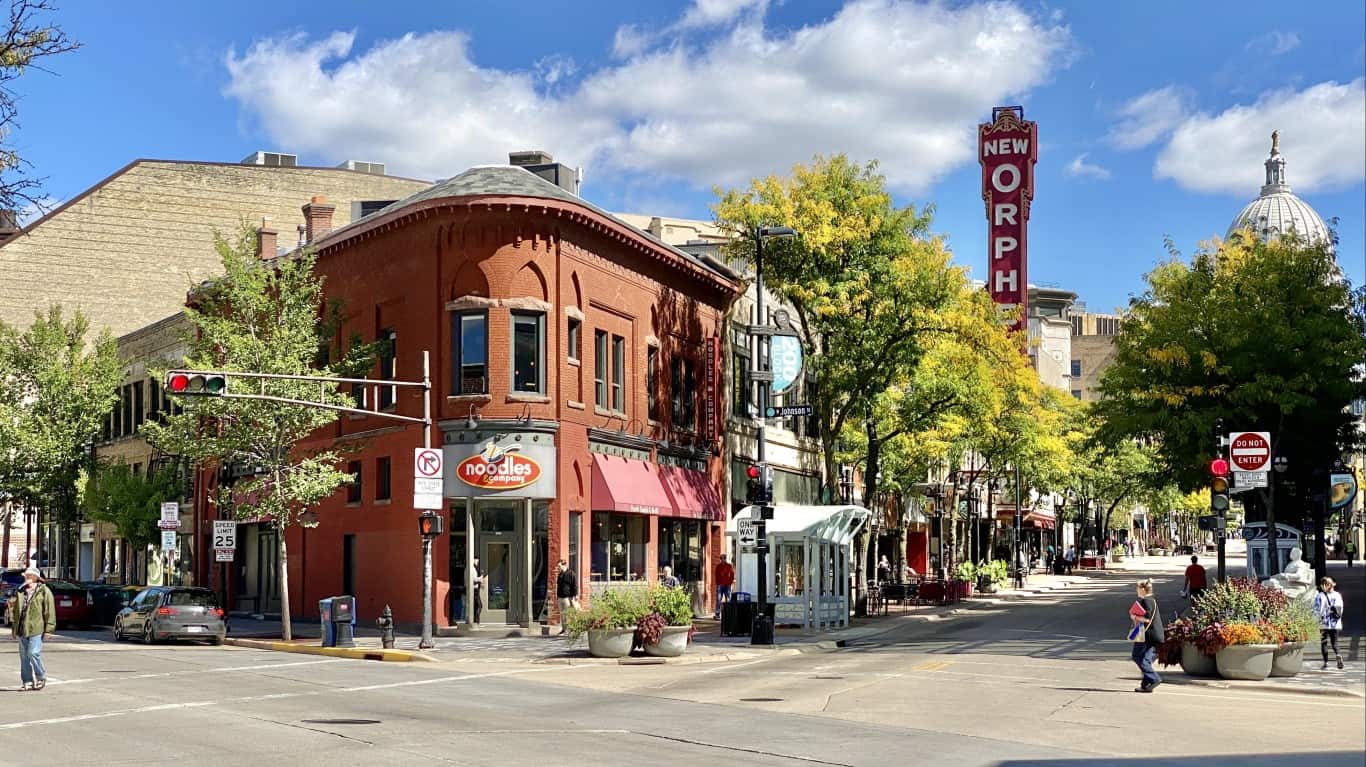
- People experiencing at least one kind of shortage: 14.3%
- People who couldn’t get a prescribed medicine: 11.2% — 3rd lowest
- People who can’t find OTC medicine: 4.2% — 11th lowest
- People reporting health consequences due to shortages: 4.4% — 18th lowest
48. Vermont
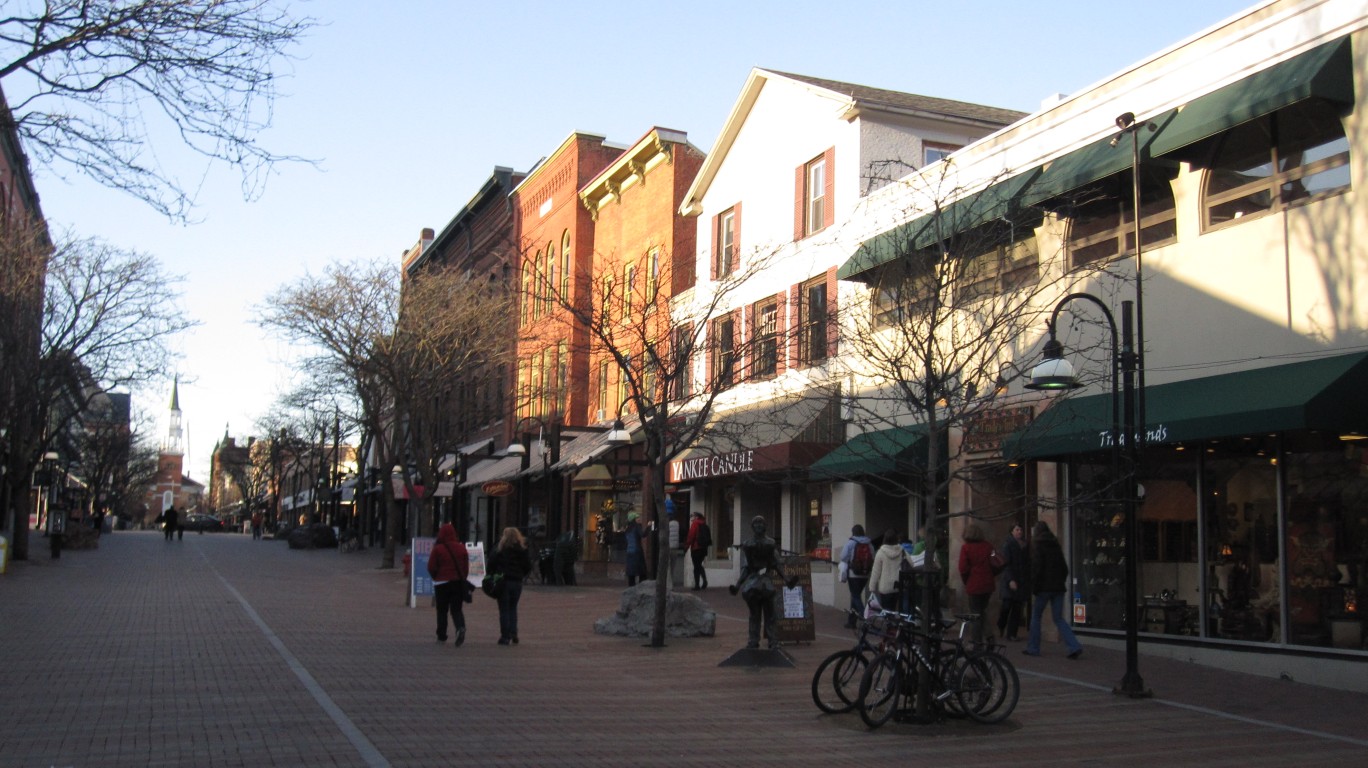
- People experiencing at least one kind of shortage: 14.7%
- People who couldn’t get a prescribed medicine: 12.0% — 7th lowest
- People who can’t find OTC medicine: 3.6% — 4th lowest
- People reporting health consequences due to shortages: 3.6% — 10th lowest
47. North Dakota
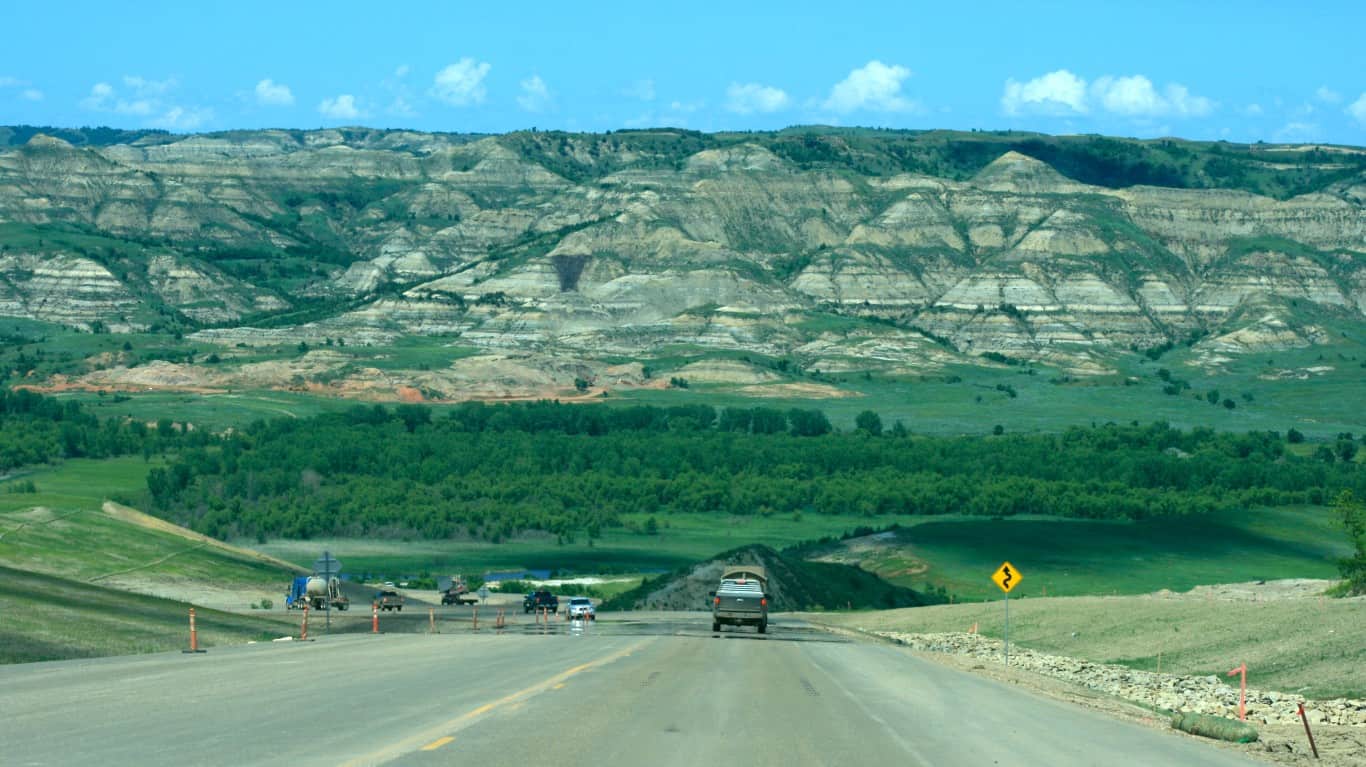
- People experiencing at least one kind of shortage: 14.8%
- People who couldn’t get a prescribed medicine: 11.8% — 6th lowest
- People who can’t find OTC medicine: 4.3% — 13th lowest
- People reporting health consequences due to shortages: 2.9% — 5th lowest
46. New York

- People experiencing at least one kind of shortage: 14.9%
- People who couldn’t get a prescribed medicine: 10.5% — 2nd lowest
- People who can’t find OTC medicine: 4.4% — 16th lowest
- People reporting health consequences due to shortages: 2.4% — 2nd lowest
45. New Jersey

- People experiencing at least one kind of shortage: 15.6%
- People who couldn’t get a prescribed medicine: 12.3% — 10th lowest
- People who can’t find OTC medicine: 4.0% — 8th lowest
- People reporting health consequences due to shortages: 2.4% — 2nd lowest
44. California
- People experiencing at least one kind of shortage: 15.8%
- People who couldn’t get a prescribed medicine: 11.4% — 4th lowest
- People who can’t find OTC medicine: 4.4% — 16th lowest
- People reporting health consequences due to shortages: 4.3% — 16th lowest
43. Pennsylvania

- People experiencing at least one kind of shortage: 15.9%
- People who couldn’t get a prescribed medicine: 12.2% — 9th lowest
- People who can’t find OTC medicine: 4.3% — 13th lowest
- People reporting health consequences due to shortages: 2.5% — 3rd lowest
42. Montana

- People experiencing at least one kind of shortage: 16.3%
- People who couldn’t get a prescribed medicine: 11.6% — 5th lowest
- People who can’t find OTC medicine: 5.4% — 15th highest
- People reporting health consequences due to shortages: 4.5% — 19th lowest
40. Colorado

- People experiencing at least one kind of shortage: 16.7%
- People who couldn’t get a prescribed medicine: 13.6% — 13th lowest
- People who can’t find OTC medicine: 4.0% — 8th lowest
- People reporting health consequences due to shortages: 3.6% — 10th lowest
40. South Dakota

- People experiencing at least one kind of shortage: 16.7%
- People who couldn’t get a prescribed medicine: 12.2% — 9th lowest
- People who can’t find OTC medicine: 5.1% — 23rd highest
- People reporting health consequences due to shortages: 4.0% — 14th lowest
38. Florida
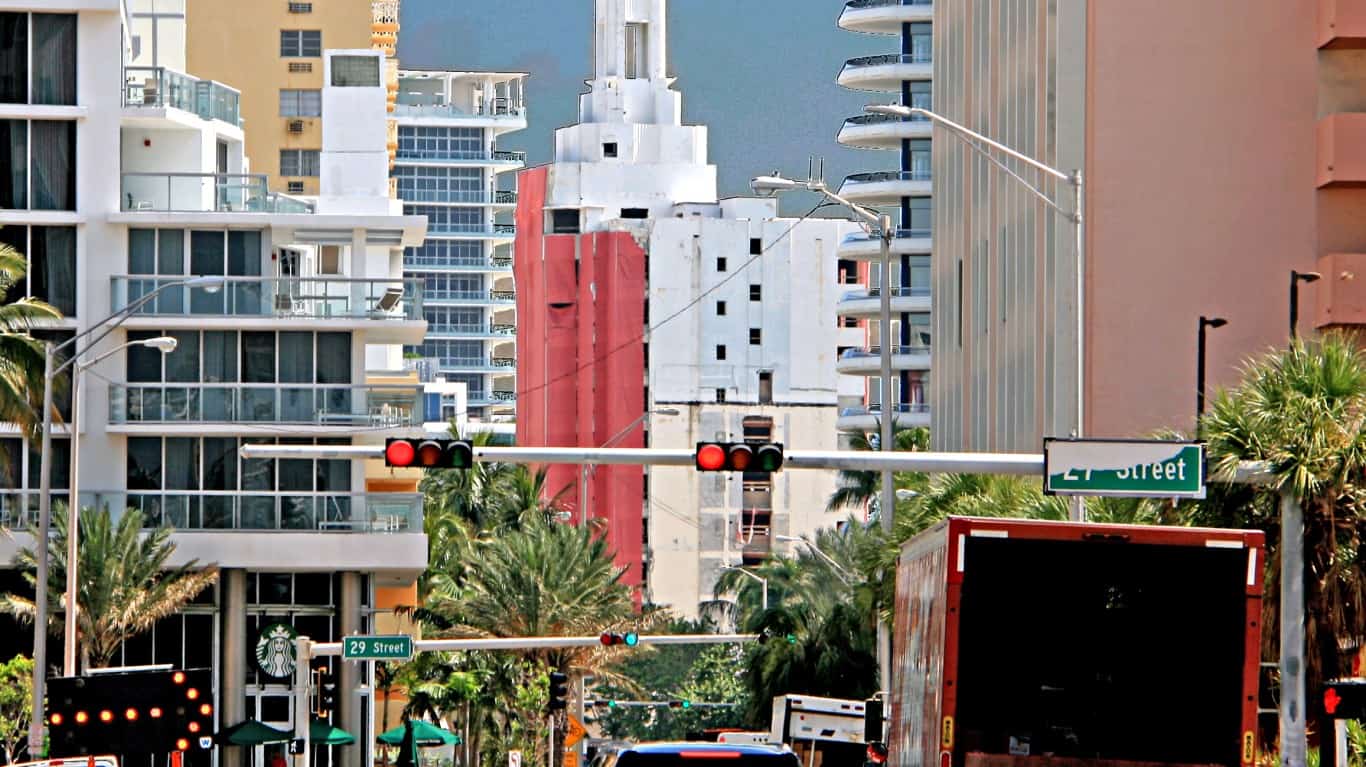
- People experiencing at least one kind of shortage: 16.9%
- People who couldn’t get a prescribed medicine: 13.4% — 11th lowest
- People who can’t find OTC medicine: 3.6% — 4th lowest
- People reporting health consequences due to shortages: 4.6% — 23rd lowest
38. Washington
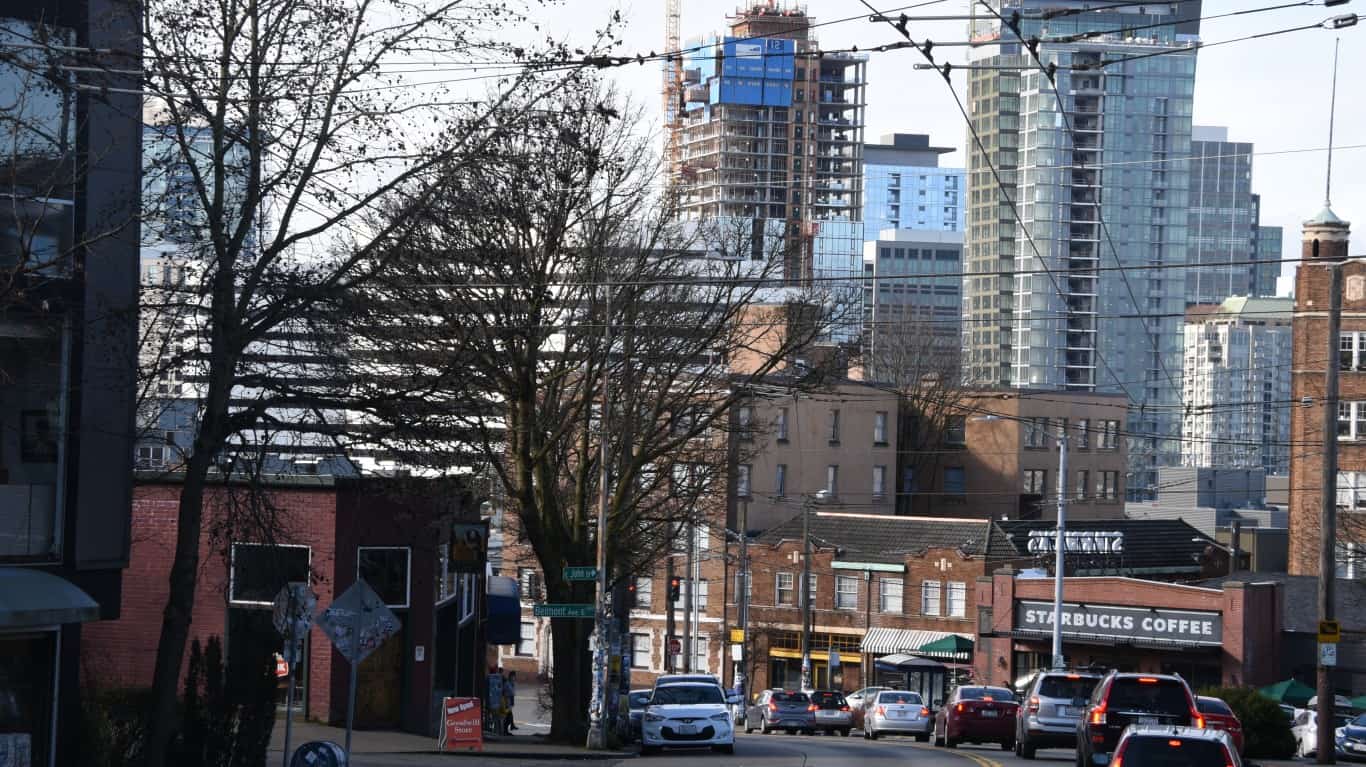
- People experiencing at least one kind of shortage: 16.9%
- People who couldn’t get a prescribed medicine: 14.1% — 16th lowest
- People who can’t find OTC medicine: 4.8% — 24th lowest
- People reporting health consequences due to shortages: 4.3% — 16th lowest
37. Minnesota
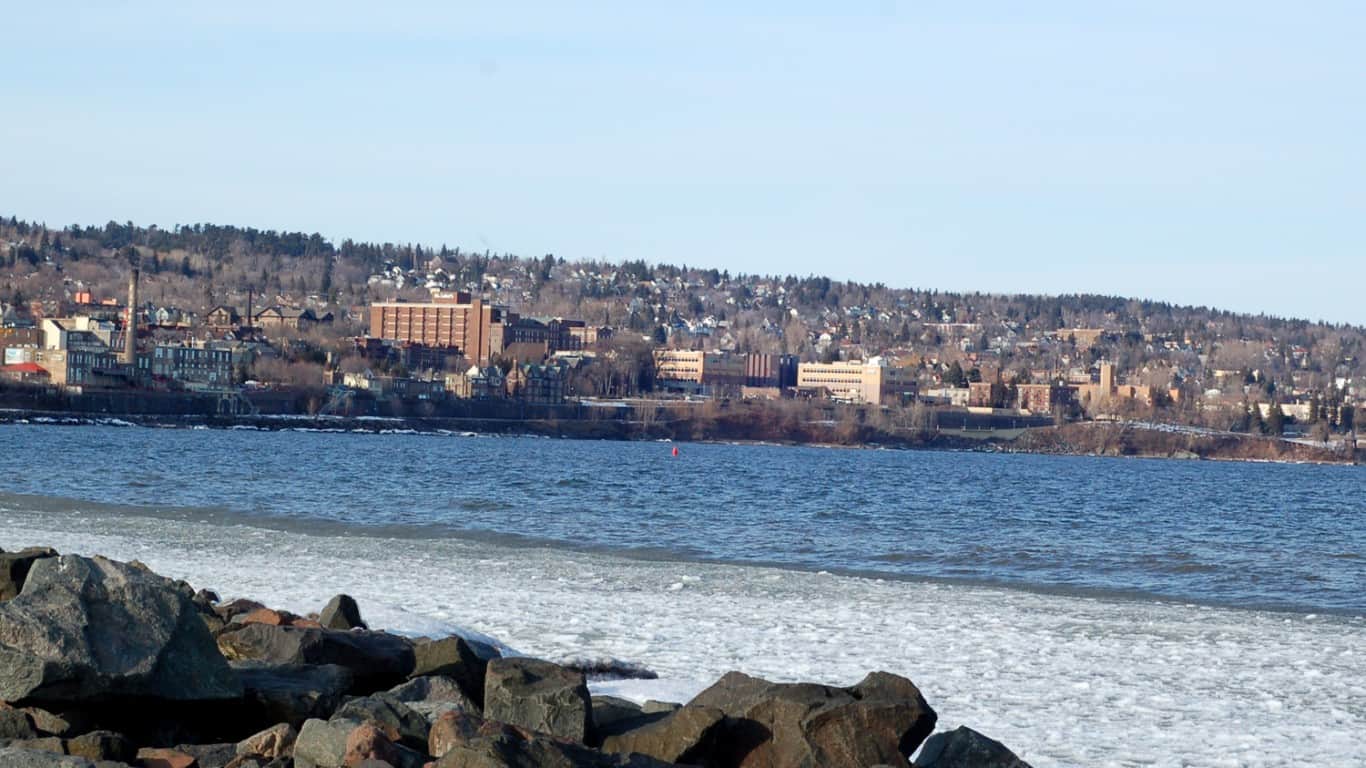
- People experiencing at least one kind of shortage: 18.1%
- People who couldn’t get a prescribed medicine: 15.5% — 25th highest
- People who can’t find OTC medicine: 4.6% — 18th lowest
- People reporting health consequences due to shortages: 4.7% — 24th highest
35. Connecticut

- People experiencing at least one kind of shortage: 18.2%
- People who couldn’t get a prescribed medicine: 13.6% — 13th lowest
- People who can’t find OTC medicine: 5.2% — 22nd highest
- People reporting health consequences due to shortages: 5.2% — 15th highest
35. Nebraska

- People experiencing at least one kind of shortage: 18.2%
- People who couldn’t get a prescribed medicine: 14.3% — 17th lowest
- People who can’t find OTC medicine: 3.8% — 5th lowest
- People reporting health consequences due to shortages: 4.6% — 23rd lowest
34. Virginia

- People experiencing at least one kind of shortage: 18.3%
- People who couldn’t get a prescribed medicine: 14.4% — 18th lowest
- People who can’t find OTC medicine: 5.1% — 23rd highest
- People reporting health consequences due to shortages: 4.8% — 23rd highest
33. Oregon

Springtime view of the bank of the Columbia river in Astoria, Oregon.
- People experiencing at least one kind of shortage: 18.5%
- People who couldn’t get a prescribed medicine: 13.7% — 14th lowest
- People who can’t find OTC medicine: 5.0% — 25th lowest
- People reporting health consequences due to shortages: 5.2% — 15th highest
30. Arizona

- People experiencing at least one kind of shortage: 18.7%
- People who couldn’t get a prescribed medicine: 14.1% — 16th lowest
- People who can’t find OTC medicine: 5.7% — 11th highest
- People reporting health consequences due to shortages: 4.6% — 23rd lowest
30. Iowa

- People experiencing at least one kind of shortage: 18.7%
- People who couldn’t get a prescribed medicine: 15.7% — 24th highest
- People who can’t find OTC medicine: 5.8% — 9th highest
- People reporting health consequences due to shortages: 4.9% — 20th highest
30. Maryland
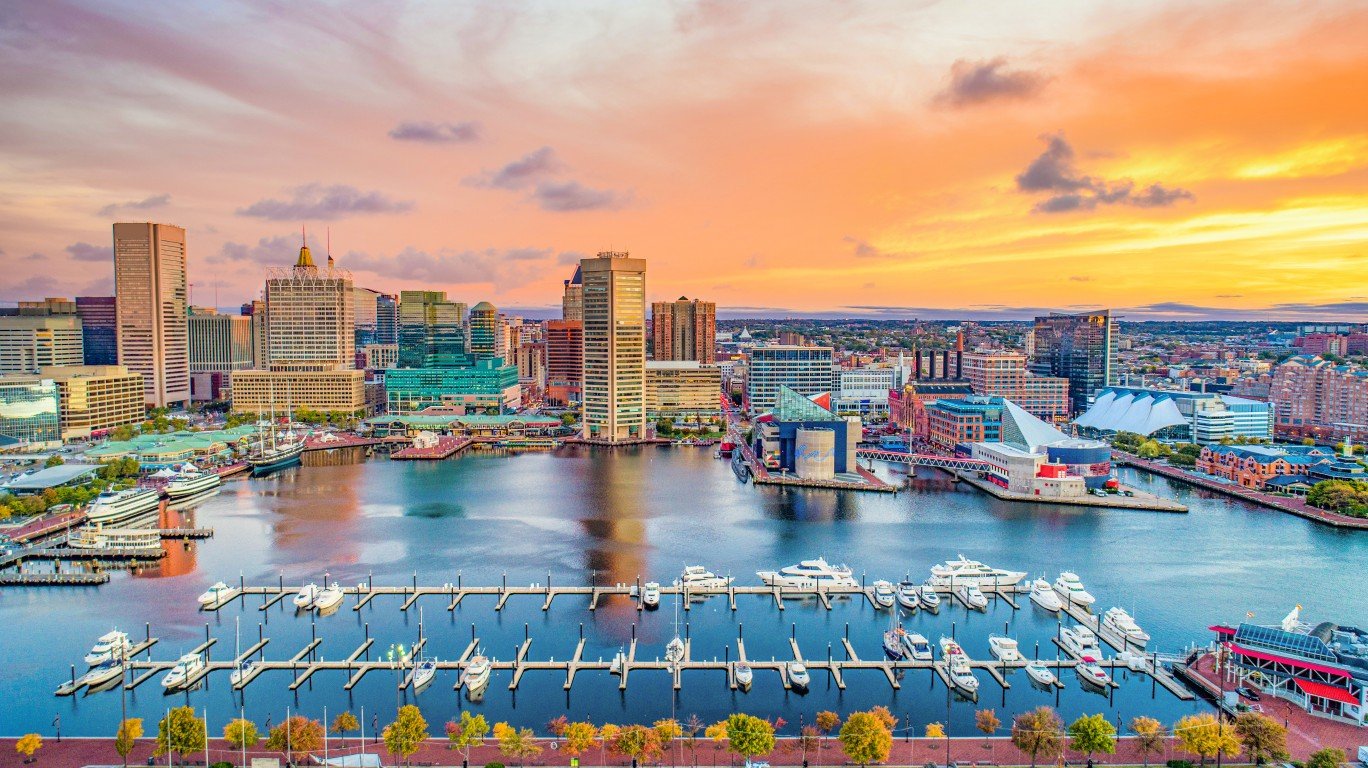
- People experiencing at least one kind of shortage: 18.7%
- People who couldn’t get a prescribed medicine: 15.0% — 20th lowest
- People who can’t find OTC medicine: 3.6% — 4th lowest
- People reporting health consequences due to shortages: 3.4% — 6th lowest
28. Alaska

- People experiencing at least one kind of shortage: 19.2%
- People who couldn’t get a prescribed medicine: 15.3% — 22nd lowest
- People who can’t find OTC medicine: 4.1% — 10th lowest
- People reporting health consequences due to shortages: 6.0% — 9th highest
28. Rhode Island
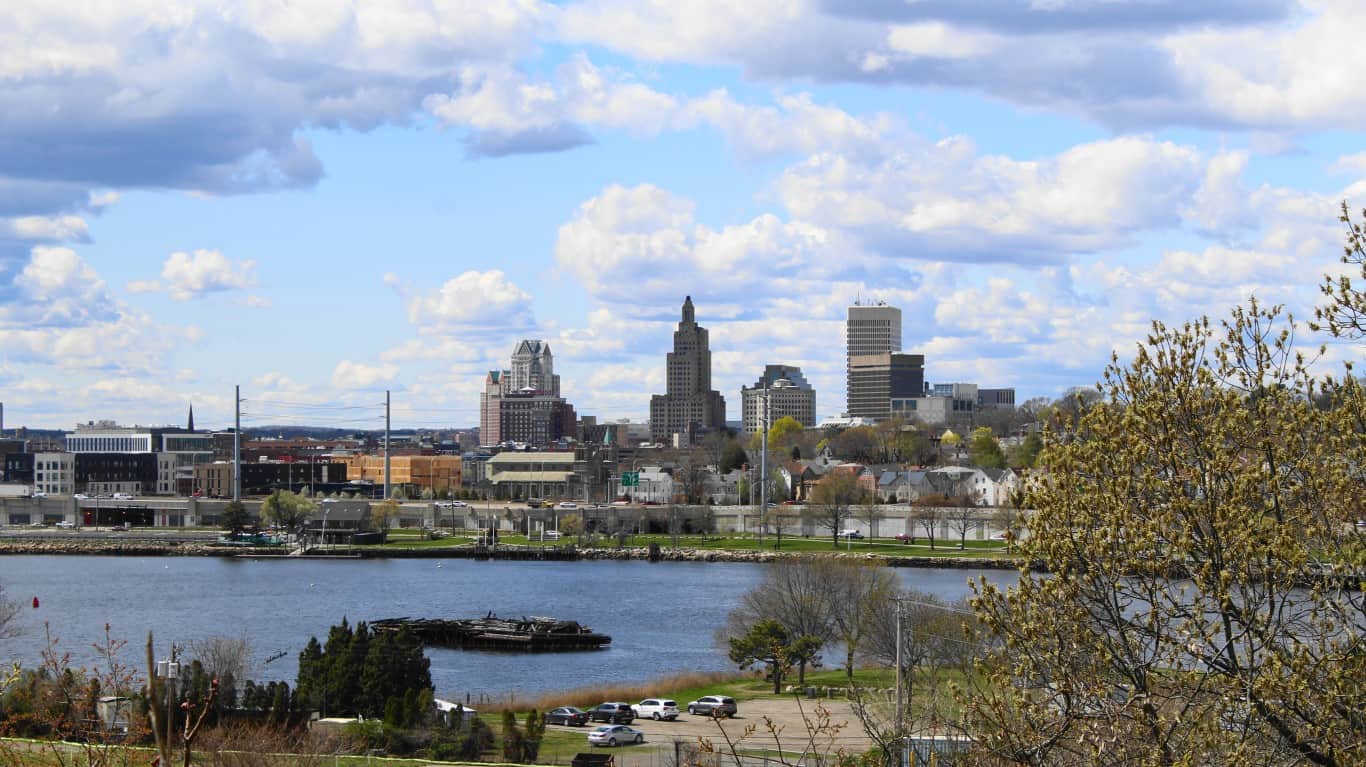
- People experiencing at least one kind of shortage: 19.2%
- People who couldn’t get a prescribed medicine: 15.0% — 20th lowest
- People who can’t find OTC medicine: 4.7% — 20th lowest
- People reporting health consequences due to shortages: 3.6% — 10th lowest
26. Ohio
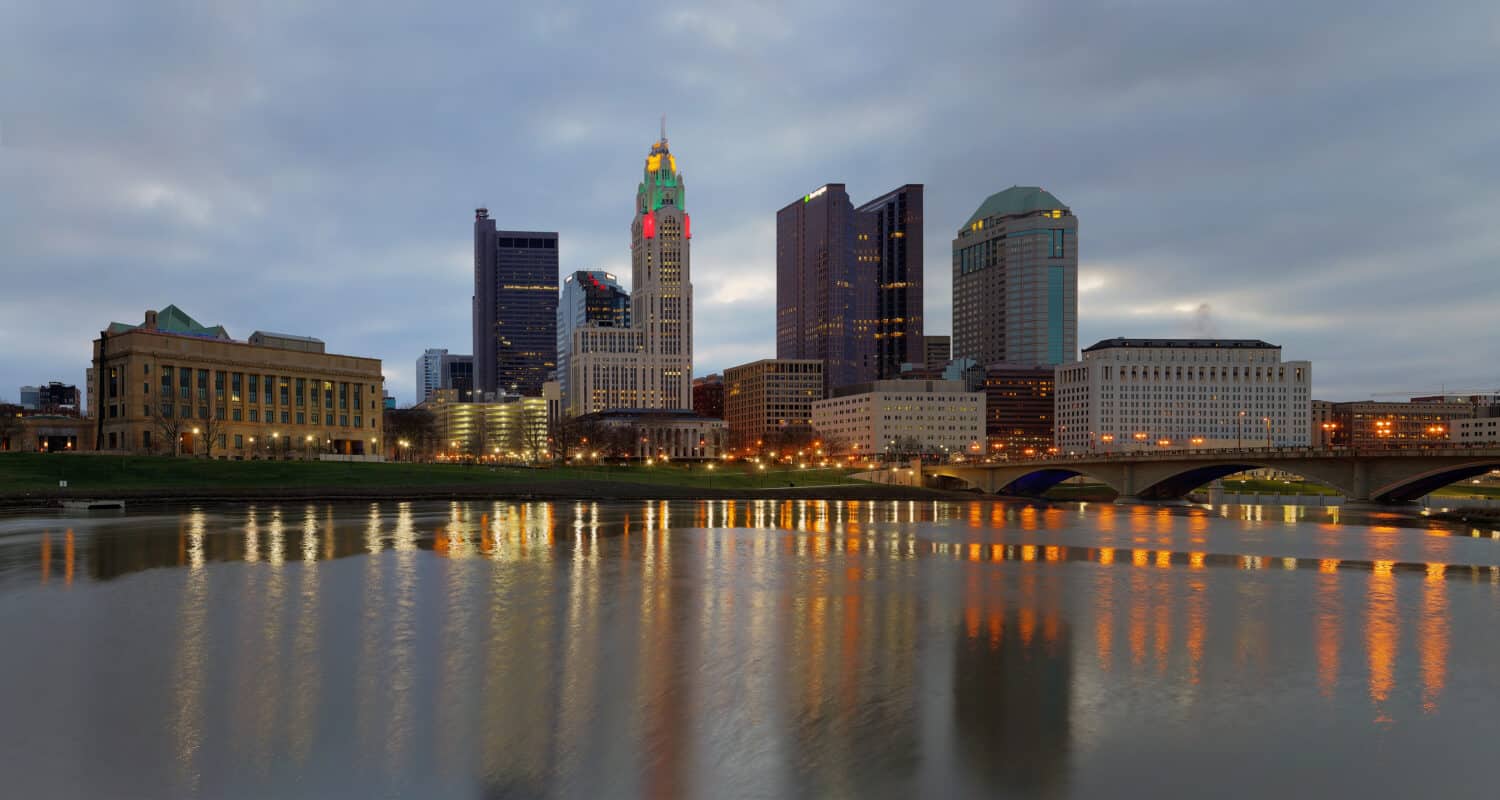
- People experiencing at least one kind of shortage: 19.7%
- People who couldn’t get a prescribed medicine: 15.9% — 23rd highest
- People who can’t find OTC medicine: 5.4% — 15th highest
- People reporting health consequences due to shortages: 4.4% — 18th lowest
26. Texas
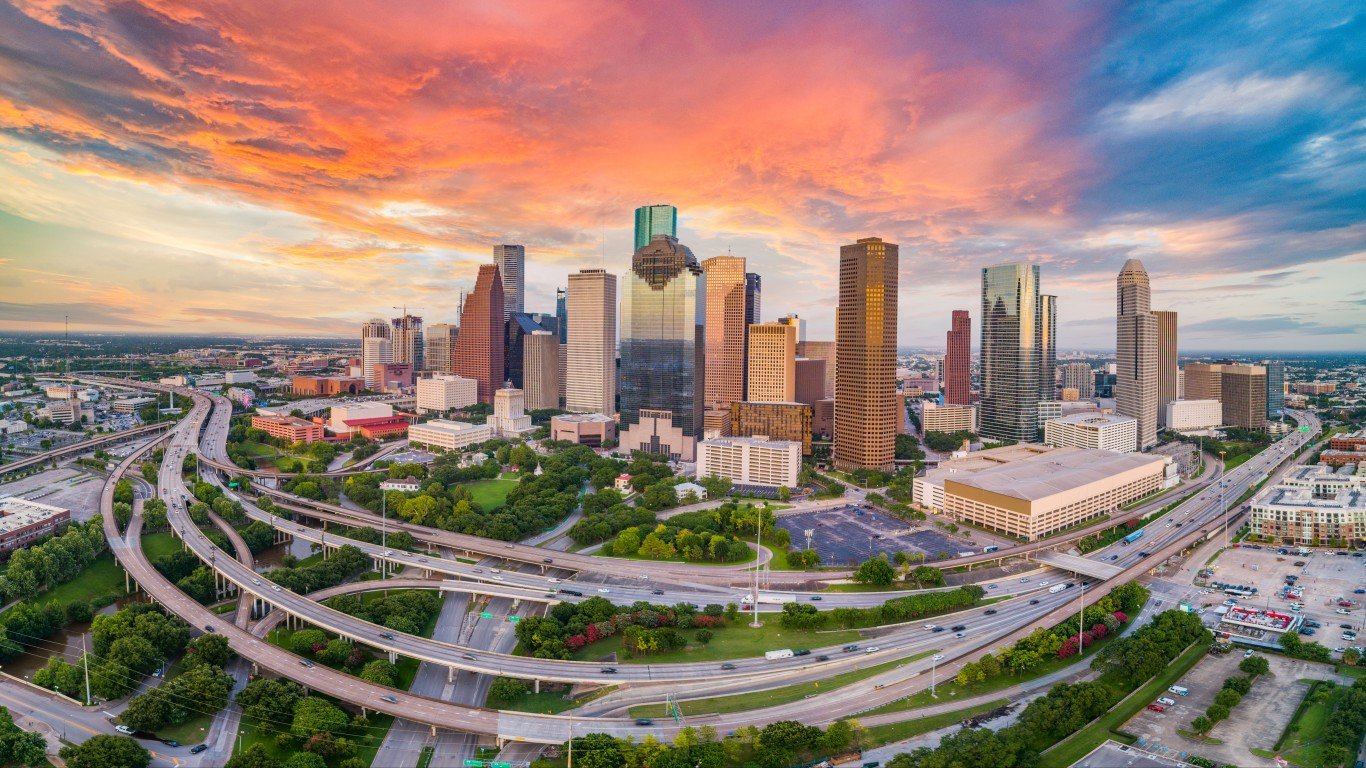
Houston, Texas, USA Drone Skyline Aerial Panorama.
- People experiencing at least one kind of shortage: 19.7%
- People who couldn’t get a prescribed medicine: 16.8% — 15th highest
- People who can’t find OTC medicine: 4.8% — 24th lowest
- People reporting health consequences due to shortages: 4.6% — 23rd lowest
25. Arkansas
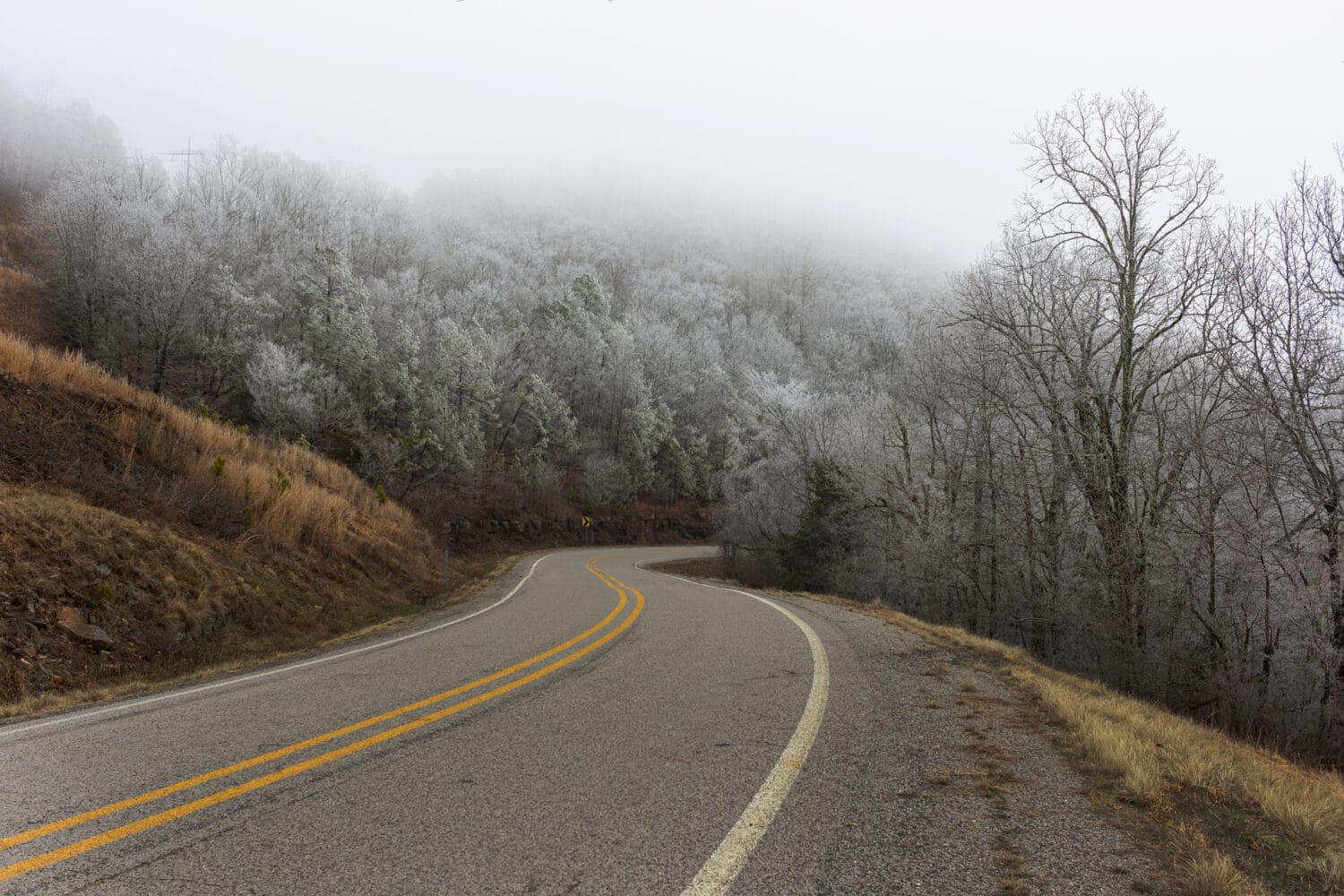
- People experiencing at least one kind of shortage: 20.1%
- People who couldn’t get a prescribed medicine: 16.0% — 22nd highest
- People who can’t find OTC medicine: 6.2% — 5th highest
- People reporting health consequences due to shortages: 5.0% — 19th highest
23. Maine

- People experiencing at least one kind of shortage: 20.2%
- People who couldn’t get a prescribed medicine: 16.7% — 16th highest
- People who can’t find OTC medicine: 4.7% — 20th lowest
- People reporting health consequences due to shortages: 7.0% — the highest
23. North Carolina
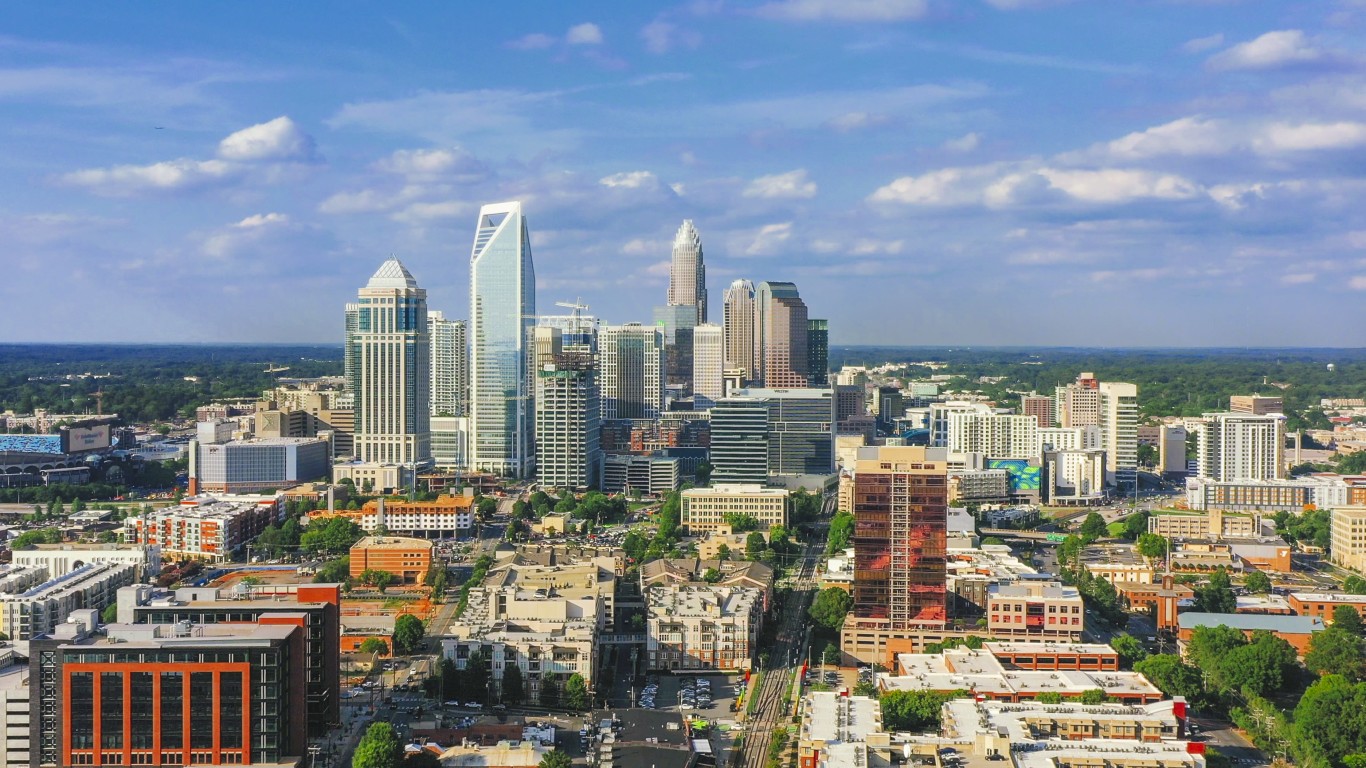
- People experiencing at least one kind of shortage: 20.2%
- People who couldn’t get a prescribed medicine: 17.1% — 14th highest
- People who can’t find OTC medicine: 4.4% — 16th lowest
- People reporting health consequences due to shortages: 4.7% — 24th highest
22. Missouri
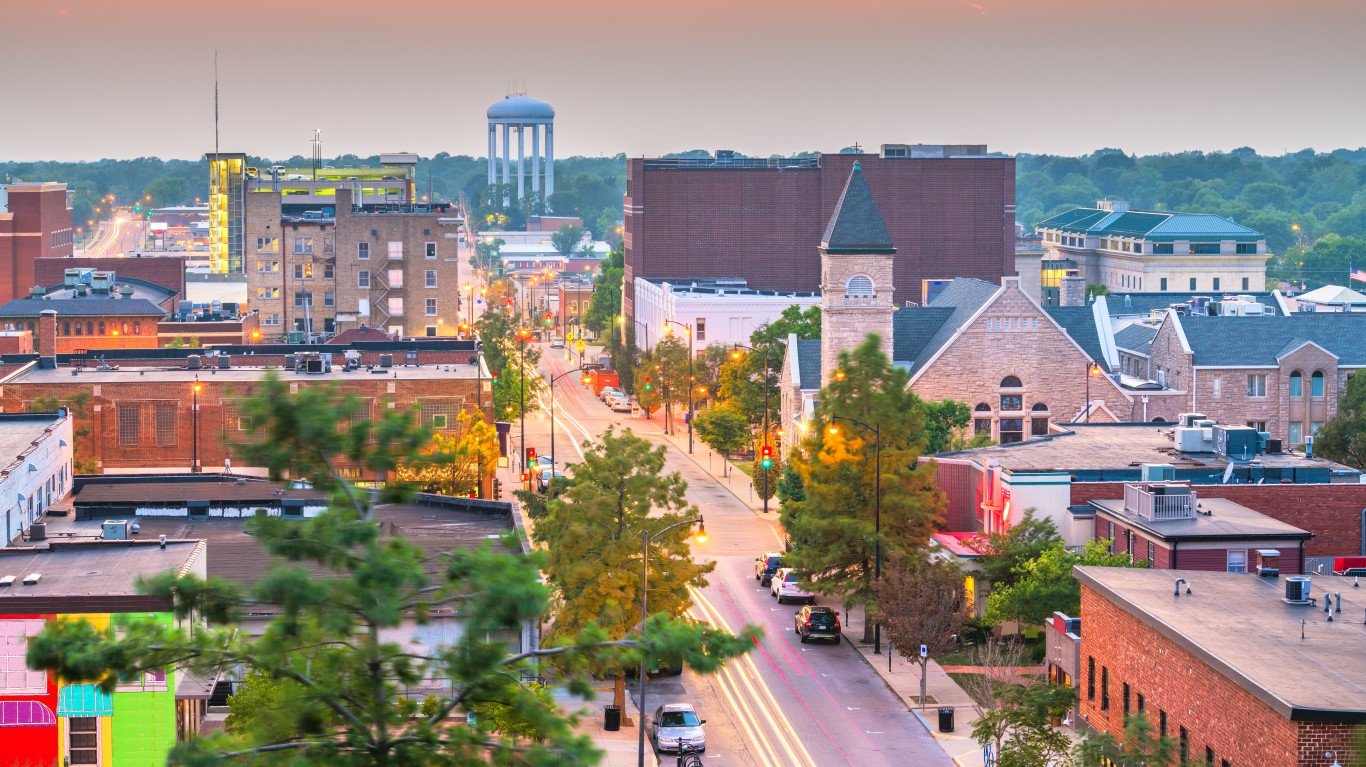
- People experiencing at least one kind of shortage: 20.4%
- People who couldn’t get a prescribed medicine: 16.1% — 21st highest
- People who can’t find OTC medicine: 4.8% — 24th lowest
- People reporting health consequences due to shortages: 6.7% — 3rd highest
20. Delaware

- People experiencing at least one kind of shortage: 20.5%
- People who couldn’t get a prescribed medicine: 16.4% — 20th highest
- People who can’t find OTC medicine: 4.1% — 10th lowest
- People reporting health consequences due to shortages: 4.0% — 14th lowest
20. Kansas

Wichita, Kansas, USA downtown skyline at dusk.
- People experiencing at least one kind of shortage: 20.5%
- People who couldn’t get a prescribed medicine: 15.5% — 25th highest
- People who can’t find OTC medicine: 5.7% — 11th highest
- People reporting health consequences due to shortages: 5.2% — 15th highest
19. Mississippi

- People experiencing at least one kind of shortage: 20.7%
- People who couldn’t get a prescribed medicine: 15.5% — 25th highest
- People who can’t find OTC medicine: 5.4% — 15th highest
- People reporting health consequences due to shortages: 4.7% — 24th highest
18. Idaho

- People experiencing at least one kind of shortage: 20.8%
- People who couldn’t get a prescribed medicine: 17.4% — 11th highest
- People who can’t find OTC medicine: 5.1% — 23rd highest
- People reporting health consequences due to shortages: 5.7% — 12th highest
17. Massachusetts
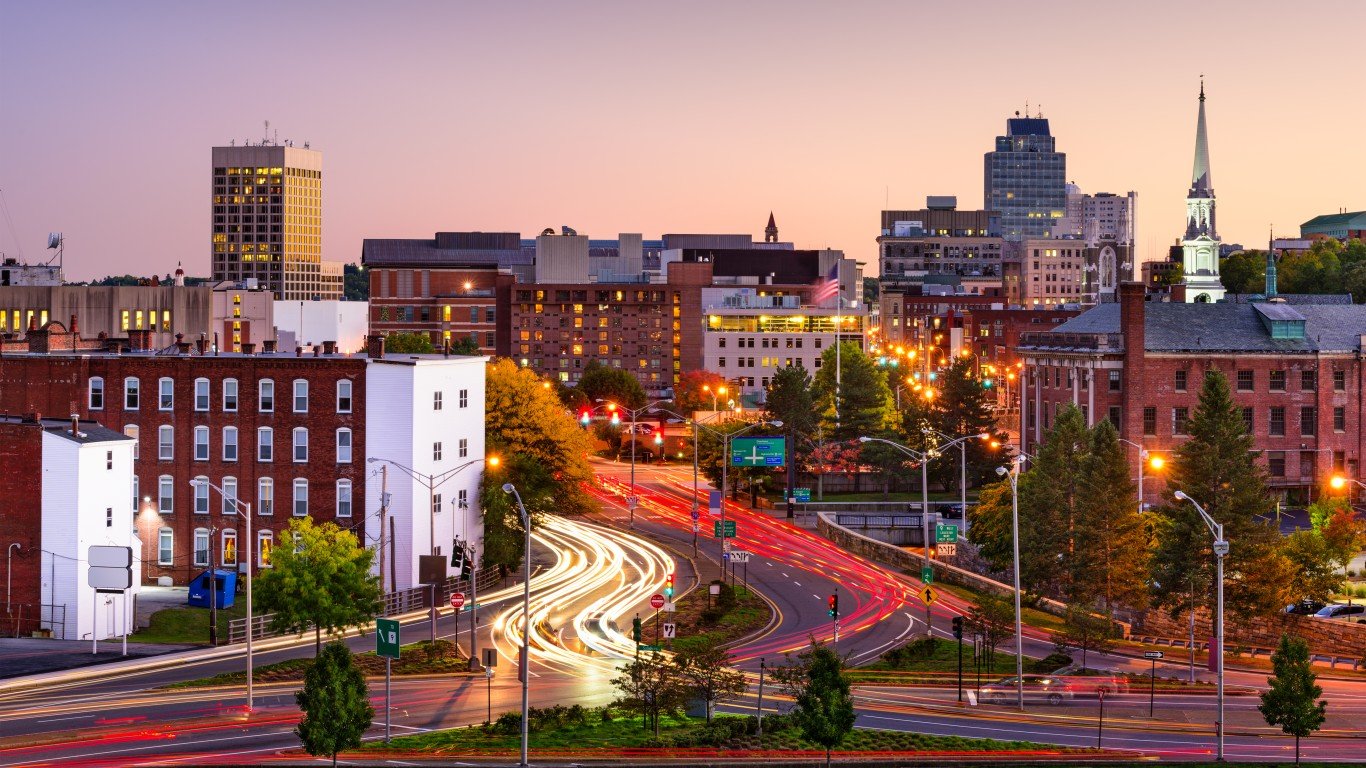
- People experiencing at least one kind of shortage: 21.0%
- People who couldn’t get a prescribed medicine: 17.8% — 8th highest
- People who can’t find OTC medicine: 5.3% — 19th highest
- People reporting health consequences due to shortages: 4.9% — 20th highest
14. New Mexico

- People experiencing at least one kind of shortage: 21.1%
- People who couldn’t get a prescribed medicine: 15.5% — 25th highest
- People who can’t find OTC medicine: 5.3% — 19th highest
- People reporting health consequences due to shortages: 3.7% — 11th lowest
14. Oklahoma

- People experiencing at least one kind of shortage: 21.1%
- People who couldn’t get a prescribed medicine: 15.1% — 21st lowest
- People who can’t find OTC medicine: 7.1% — 3rd highest
- People reporting health consequences due to shortages: 6.0% — 9th highest
14. Utah

- People experiencing at least one kind of shortage: 21.1%
- People who couldn’t get a prescribed medicine: 17.3% — 12th highest
- People who can’t find OTC medicine: 5.8% — 9th highest
- People reporting health consequences due to shortages: 7.0% — the highest
13. Michigan

- People experiencing at least one kind of shortage: 21.2%
- People who couldn’t get a prescribed medicine: 16.5% — 19th highest
- People who can’t find OTC medicine: 4.8% — 24th lowest
- People reporting health consequences due to shortages: 5.7% — 12th highest
12. Illinois
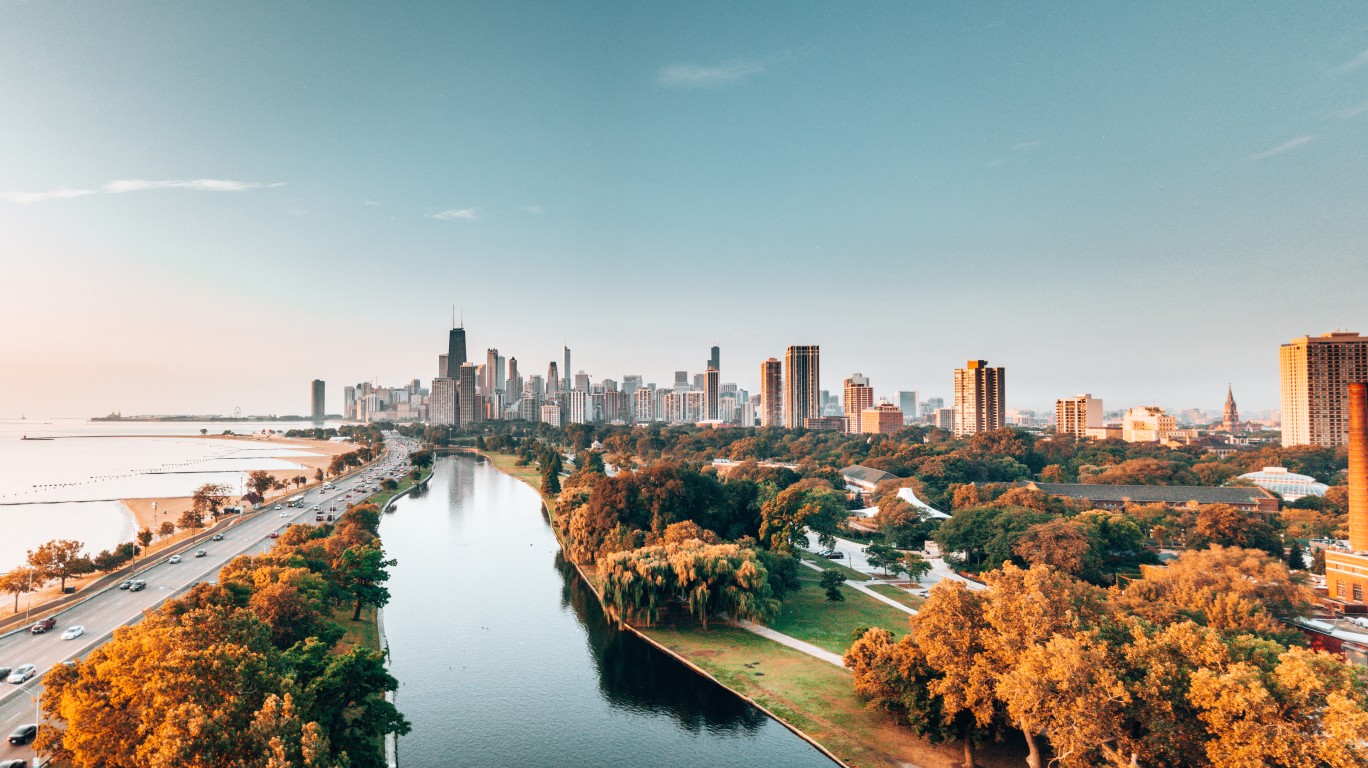
- People experiencing at least one kind of shortage: 21.5%
- People who couldn’t get a prescribed medicine: 18.3% — 5th highest
- People who can’t find OTC medicine: 3.9% — 6th lowest
- People reporting health consequences due to shortages: 6.3% — 5th highest
10. Georgia
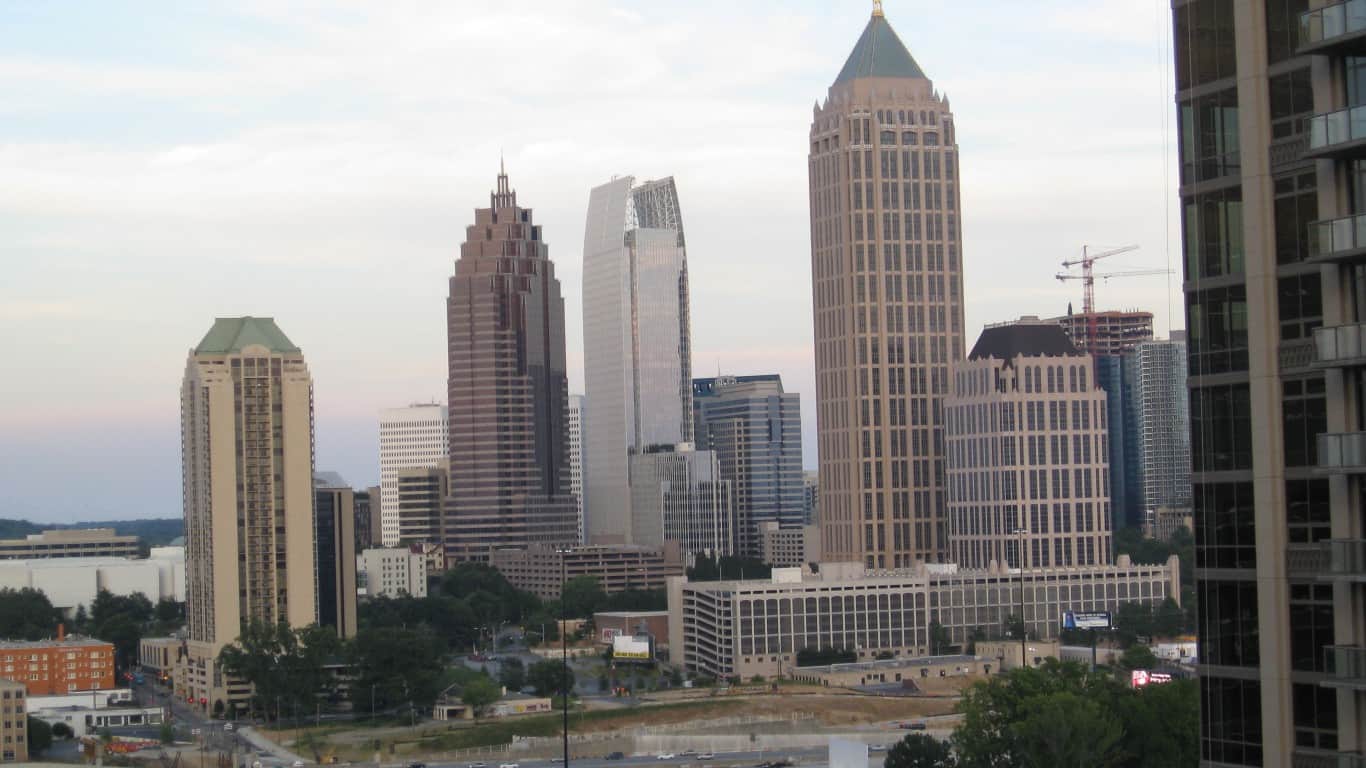
- People experiencing at least one kind of shortage: 21.6%
- People who couldn’t get a prescribed medicine: 17.6% — 9th highest
- People who can’t find OTC medicine: 5.7% — 11th highest
- People reporting health consequences due to shortages: 5.1% — 18th highest
10. Kentucky
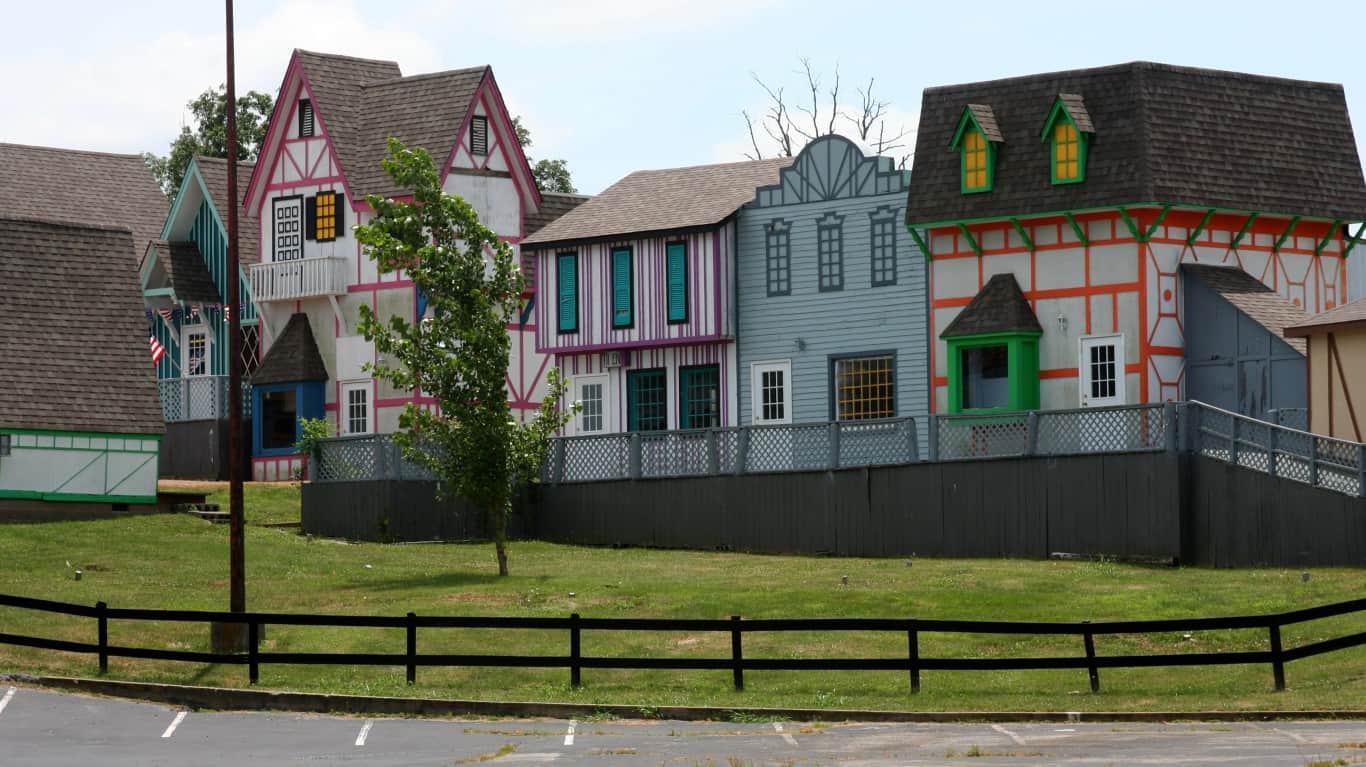
- People experiencing at least one kind of shortage: 21.6%
- People who couldn’t get a prescribed medicine: 18.5% — 4th highest
- People who can’t find OTC medicine: 4.5% — 17th lowest
- People reporting health consequences due to shortages: 3.5% — 7th lowest
8. Nevada
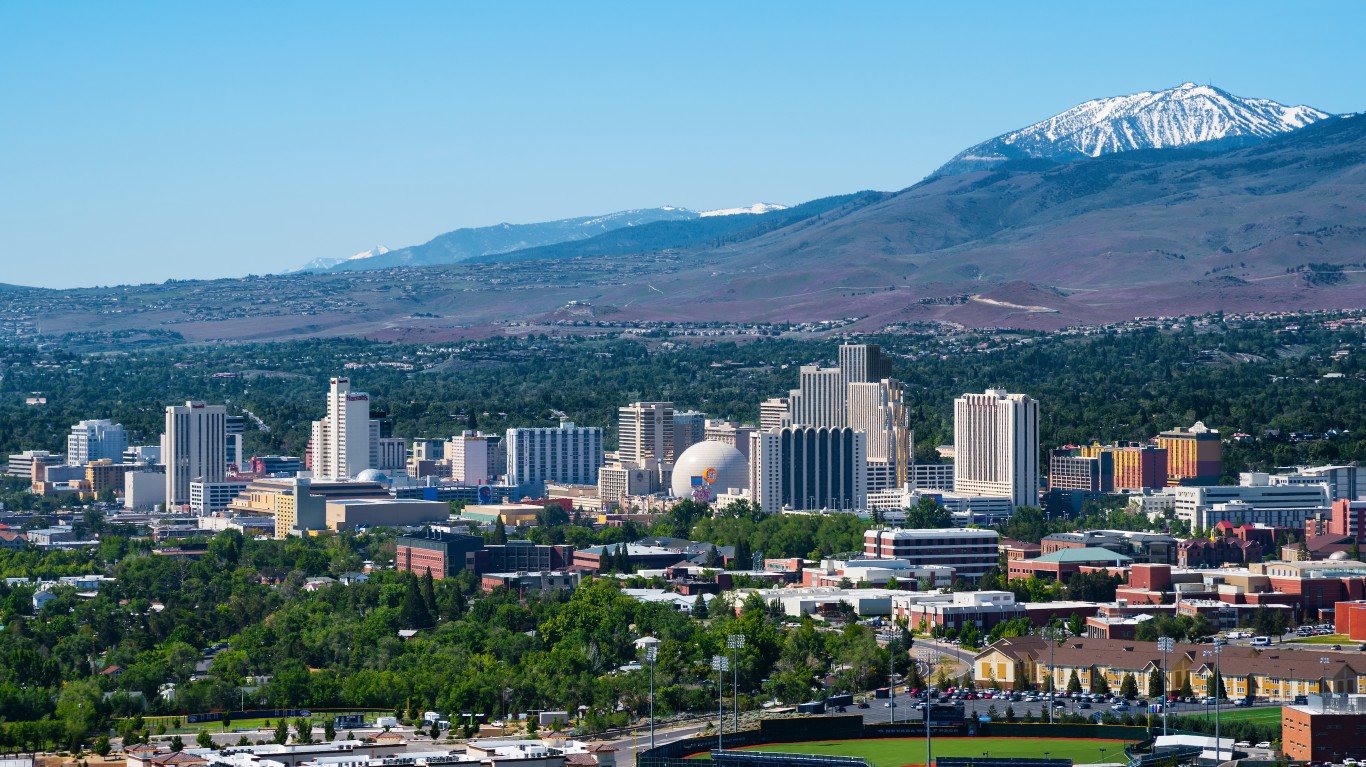
- People experiencing at least one kind of shortage: 21.9%
- People who couldn’t get a prescribed medicine: 16.7% — 16th highest
- People who can’t find OTC medicine: 6.0% — 6th highest
- People reporting health consequences due to shortages: 6.3% — 5th highest
8. Tennessee

- People experiencing at least one kind of shortage: 21.9%
- People who couldn’t get a prescribed medicine: 17.6% — 9th highest
- People who can’t find OTC medicine: 5.3% — 19th highest
- People reporting health consequences due to shortages: 4.7% — 24th highest
6. Indiana
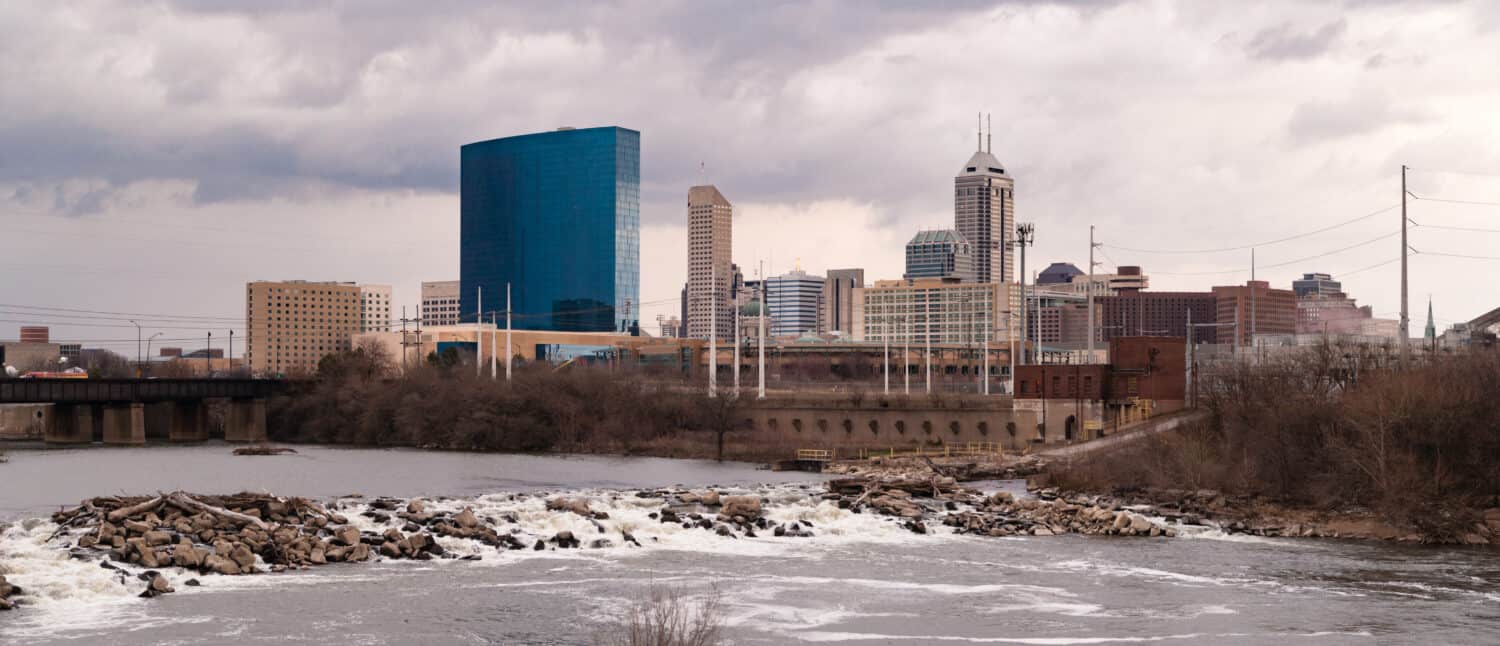
- People experiencing at least one kind of shortage: 22.3%
- People who couldn’t get a prescribed medicine: 17.2% — 13th highest
- People who can’t find OTC medicine: 5.4% — 15th highest
- People reporting health consequences due to shortages: 4.0% — 14th lowest
6. Louisiana
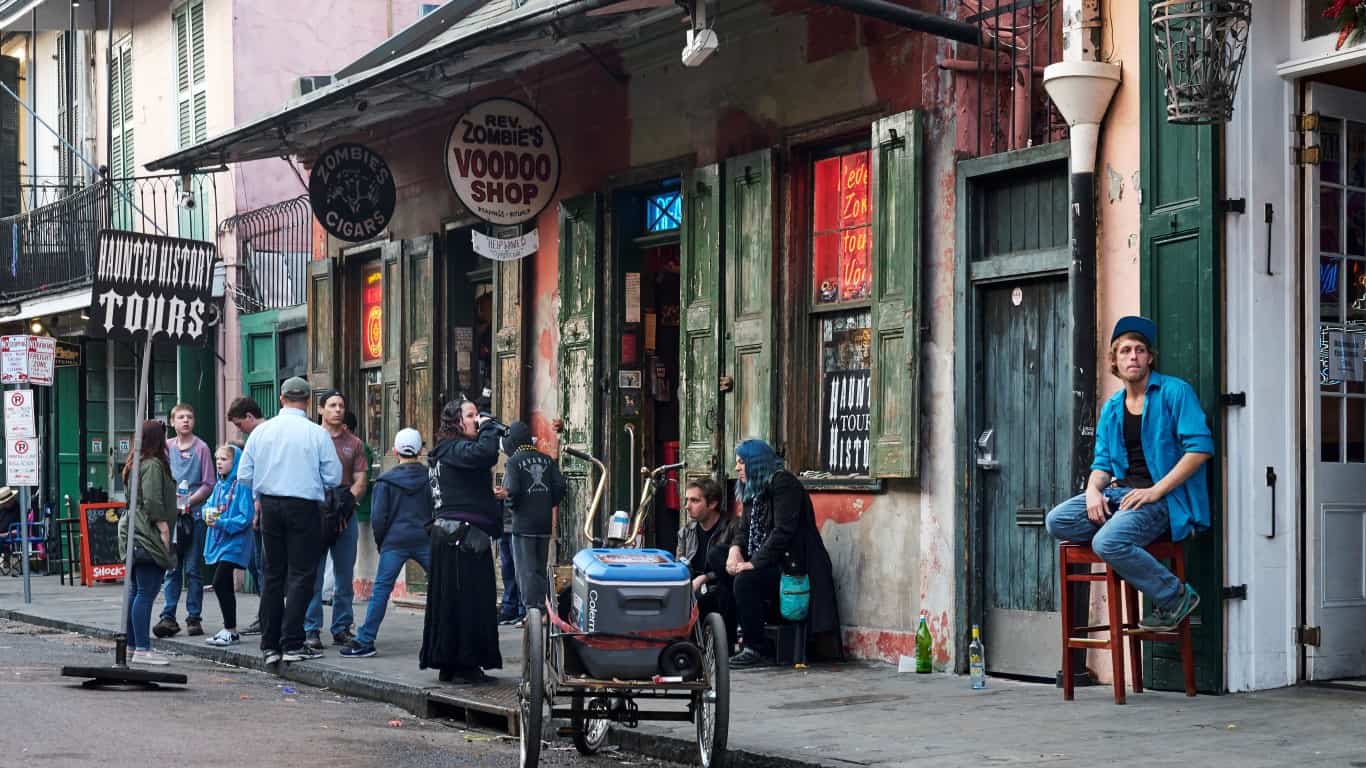
- People experiencing at least one kind of shortage: 22.3%
- People who couldn’t get a prescribed medicine: 19.0% — 2nd highest
- People who can’t find OTC medicine: 5.6% — 14th highest
- People reporting health consequences due to shortages: 5.8% — 11th highest
5. Alabama

- People experiencing at least one kind of shortage: 22.4%
- People who couldn’t get a prescribed medicine: 16.7% — 16th highest
- People who can’t find OTC medicine: 7.0% — 4th highest
- People reporting health consequences due to shortages: 5.5% — 14th highest
4. Wyoming

- People experiencing at least one kind of shortage: 22.6%
- People who couldn’t get a prescribed medicine: 17.9% — 7th highest
- People who can’t find OTC medicine: 8.1% — the highest
- People reporting health consequences due to shortages: 6.3% — 5th highest
3. New Hampshire

- People experiencing at least one kind of shortage: 23.1%
- People who couldn’t get a prescribed medicine: 18.6% — 3rd highest
- People who can’t find OTC medicine: 7.3% — 2nd highest
- People reporting health consequences due to shortages: 6.6% — 4th highest
2. South Carolina

Charleston, South Carolina, USA in the French Quarter.
- People experiencing at least one kind of shortage: 23.7%
- People who couldn’t get a prescribed medicine: 18.0% — 6th highest
- People who can’t find OTC medicine: 6.0% — 6th highest
- People reporting health consequences due to shortages: 4.9% — 20th highest
1. West Virginia

- People experiencing at least one kind of shortage: 24.3%
- People who couldn’t get a prescribed medicine: 19.7% — the highest
- People who can’t find OTC medicine: 5.9% — 8th highest
- People reporting health consequences due to shortages: 6.1% — 8th highest

